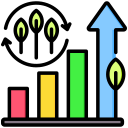Sustainable Urban Planning with Renewable Resources
Integrating Renewable Energy in Urban Design
Embracing Solar Power
The widespread installation of solar panels on residential, commercial, and public buildings exemplifies how cities can harness locally-sourced renewable energy. Solar farms in underutilized urban spaces, such as rooftops and parking lots, contribute to distributed energy generation and offer significant savings over traditional power sources. Planners also explore innovative uses for solar energy, like integrating photovoltaic cells into building facades or sidewalks, thus turning everyday structures into energy generators. As technology advances and costs decline, solar becomes ever more accessible, enabling even low-income neighborhoods to benefit from cleaner, more affordable power, helping to close the energy equity gap.
Wind and Geothermal Integration
Urban wind turbines, often smaller and quieter than their rural counterparts, are being fitted into the skyline to tap into higher-altitude breezes. These systems are particularly valuable in areas with reliable wind patterns and limited space. Additionally, geothermal energy is gaining traction in cities that can exploit underground heat for district heating and cooling. Advanced drilling methods and heat exchange technologies now make it feasible for a broad array of urban developments. Both wind and geothermal help diversify the city’s energy mix, bolster energy security, and further reduce carbon emissions, creating a robust foundation for sustainable growth.
Energy-Efficient Infrastructure
Renewable energy alone will not achieve sustainability without concurrent investment in energy efficiency. Urban planning for the future involves mandating high-performance building codes, retrofitting existing structures, and equipping public spaces with smart grids and LED lighting. These initiatives drastically cut energy consumption and amplify the benefits of renewables. Municipalities increasingly deploy sensor-based technologies to monitor and optimize energy flows, reducing waste in real time. By combining efficiency with clean energy production, cities establish themselves as leaders in climate responsibility while driving economic savings for residents and businesses alike.
Sustainable Water and Waste Management
Cities consume vast amounts of water, making conservation and recycling indispensable for long-term sustainability. Forward-thinking municipalities are implementing dual plumbing systems that separate potable water from non-potable applications, allowing treated greywater from sinks, showers, and laundry to irrigate parks or flush toilets. Rainwater harvesting systems, from rooftop collection to underground cisterns, supplement municipal supplies and help offset demand. These measures build redundancy against droughts and natural disasters. Educational campaigns and incentives are essential to engaging the public in water-saving behaviors, further cementing these initiatives at the community level.
Electrification of Public Transit
One of the most significant shifts in sustainable mobility is the electrification of buses, trams, and commuter trains. By transitioning to electric fleets powered by local renewable sources, cities dramatically cut noise and air pollution. Battery and charging technologies are evolving rapidly, allowing for greater range and reliability. Some cities implement inductive charging strips along major routes for seamless, on-the-go energy replenishment. These efforts are often supplemented with solar canopies at transit stations and green energy contracts, ensuring that the environmental benefits of electrification are fully realized.
Promoting Active and Shared Transport
Walking, cycling, and shared mobility services are cornerstones of sustainable urban transit. Urban planners design complete streets with protected bike lanes, pleasant pedestrian pathways, and interconnected green spaces to encourage non-motorized travel. E-bike and e-scooter sharing schemes, powered by solar or wind energy, offer last-mile solutions that lower the dependency on private cars. These initiatives cultivate healthier populations and foster social cohesion. Integrating mobility hubs and smart ticketing systems also makes transitions between different modes of transport seamless, ensuring inclusivity and convenience for all demographics.
Renewable-Powered Charging Infrastructure
The effectiveness of electric vehicles and micromobility depends on a robust, renewable-powered charging network. Innovations in solar canopies, battery storage, and microgrid integration enable urban areas to deploy fast, clean charging stations at scale. These infrastructures are not just for cars: they support e-bikes, scooters, and delivery fleets, accelerating the shift towards sustainable logistics. Smart grid management tools balance demand and supply, even during peak usage. Investing in such infrastructure helps cities address "range anxiety," future-proofing urban transportation while decarbonizing mobility for generations to come.
Previous slide
Next slide

